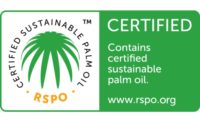“Candy” and “starch” might not sound like they have anything to do with each other.
Starch sounds like what you do to dress shirts to make them fresher and crisper, or the stuff found in carb-heavy foods.
But really, starch deserves much more attention than that — after all, it’s the gel that holds together all kinds of foods — both naturally occurring and processed. And that includes candy.
Starches exist naturally in plant-based sources such as corn, tapioca, potato, wheat, sago, and rice. Some starches work better than others to accomplish certain tasks.
Here’s a look at four starches commonly used in a variety of products, particularly in confectionery:
-
Corn starch
Speciality high amylose corn starch can reduce stoving times from 38-48 hours to 24 hours. Candies will become firmer faster. Used for jelly beans, fruit slices, and gum drops. -
Potato starch
Modified thin boiling potato starches are increasingly gaining attention, as they provide a higher clarity and elasticity compared to others. These are especially good for dietary restrictions such as kosher, halal, and vegan/vegetarian. -
Tapioca starch
Can be used as a replacement for gum Arabic when making chocolate, fruit, and nut-based centers. -
Native corn starch
Used as a moulding starch. Shapes can be stamped and candies can be set/dried. Also used as a dusting agent for marshmallows and other candies to prevent pieces sticking to each other.
These starches all serve a variety of purposes and can significantly change the structure of the product.
“Based on starch source and the chemical and/or physical modification used, starches can be used to build desired stable viscosity, mouthfeel, and texture in both hot-processed and cold-processed high moisture foods like soups, sauces, gravies, salad dressings, fruit fillings, yogurts, puddings, etc.,” says Joe Eisley, project leader, technical service, Ingredion Inc.
Starch plays the vital role of a gelling agent in products such as jelly candies (fruit slices, gum drops), fruit snacks, and gummy candy such as gummi bears. Without it, the gummy texture of such popular candies wouldn’t be achievable — and though there are other ways to get this effect, starch is an easily sourced and very versatile option, says Eisley.
Starch gets its ability to form strong gels from the polymer itself — starch granules come in two forms, either highly branched and molecular “amylopectin”, and linear, lower molecular “amylose”.
“Each plant source has a certain distinct amylopectin — amylose ratio, ranging from all amylopectin (the so-called “waxy” starches, such as waxy corn and waxy rice) to the 55-70 percent amylose content of high amylose corn starches,” explains Eisley. “All other starches are somewhere in the middle of this range — for examples, tapioca and rice with 17-19 percent amylose; potato with 20-22 percent amylose; and corn, wheat, and sago with 25-28 percent amylose.”
The higher the amylose content, the better the ability “to form strong gels and films after being cooked to the appropriate temperature and then cooled,” Ingredion’s technical expert explains. Different starch types can be modified to enhance traits such as viscosity under heat or to have a lower pH.
“Ingredion offers a wide range of starches and starch-based products to fit almost any confectionery application need,” he adds.
These include Flojel, a series of thin-boiling modified corn starches, PenBind, a thin-boiling modified potato starch (from Ingredion’s recent acquisition of Penford), and Nu Mould OC, an organic moulding starch with added organic vegetable oil.
And as consumers are looking for more and more non-GMO options, non-GM (genetically modified) products are becoming more popular among starch customers.
“Nearly all of Ingredion’s starches are available as non-GM and non-GM/ Identity Preserved under our TrueTrace program. Products like tapioca, potato, and sago are inherently non-GM, but our customers can rest assured that they have 100-percent-traceable, non-GM/ IP [Identity Preserved] options based on corn, waxy maize, and high amylose corn,” says Eisley. “In fact, Ingredion’s Indianapolis plant is entirely dedicated to non-GM starch production and does not handle any GM material.”
In addition to non-GM, an increasingly popular and relevant trend is ensuring ingredients are sustainably sourced. Ingredion recognizes how critical that is to manufacturers today.
“We feel that our sustainability program is very important to our customers since a lot of them also have very robust sustainability programs and want to know that their suppliers are as engaged and like-minded about sustainability as they are,” comments Eisley. “Sustainable agriculture, sustainable sourcing, and growing raw material crops in a transparent, traceable, and responsible way is becoming more and more important to consumers... and therefore with our customers.”
Ethical sourcing is another key factor that consumers look for these days.
“In terms of social accountability, it is extremely important to our customers that we have responsible and sound, ethical business practices, that we treat our employees fairly, responsibly and ethically, and that we are stakeholders in and caretakers of the communities that we do business in,” says Eisley.
Fortunately, part of the nature of starches is that they can be locally grown and sourced, depending on the region. In the United States, corn starch is more available, in Europe it’s potato, and in the Asia Pacific it’s tapioca, rice, and sago. Also, in general, starches are more environmentally friendly than other options, such as gum Arabic and gelatin.
Clearly starch remains a faithful stand-by for many confectionery products. Add to that its capability of being a sustainably/ethically sourced ingredient, and it’s obvious the industry will continue to be sweet on starch.











